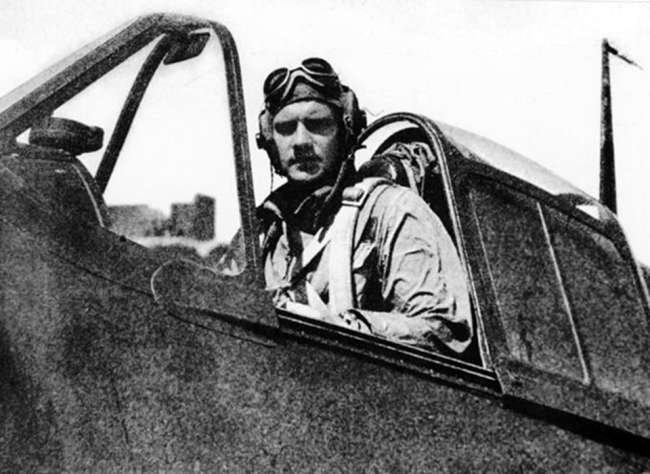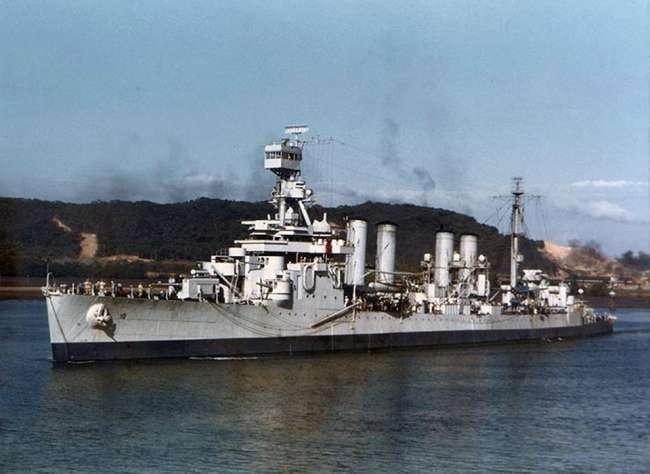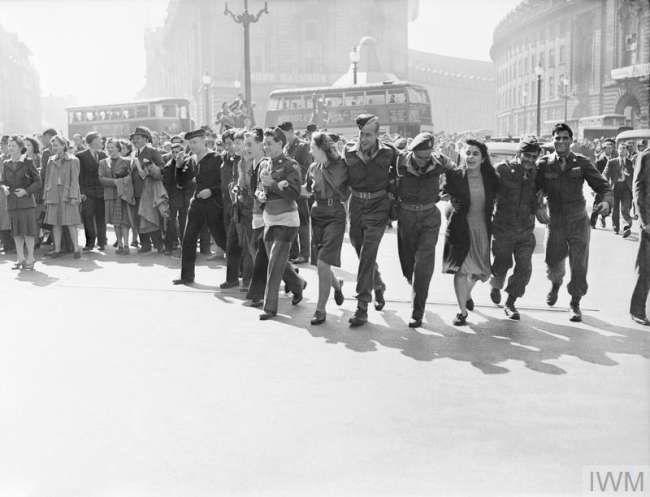Roughly 94,000 Americans were held as prisoners of war in the European Theater and 7,717 of them spent time in Stalag Luft I on the Baltic sea in the German city of Barth, 105 miles northwest of Berlin. The American POWs referred to it, somewhat ironically, as “Beautiful Barth on the Baltic.” In addition to the Americans, the camp was home to around 1,400 British POWS. The camp was right outside of the city and the large Lutheran church two miles from the camp gates was visible to the POWs and it was often reproduced in POW drawings and sketches.
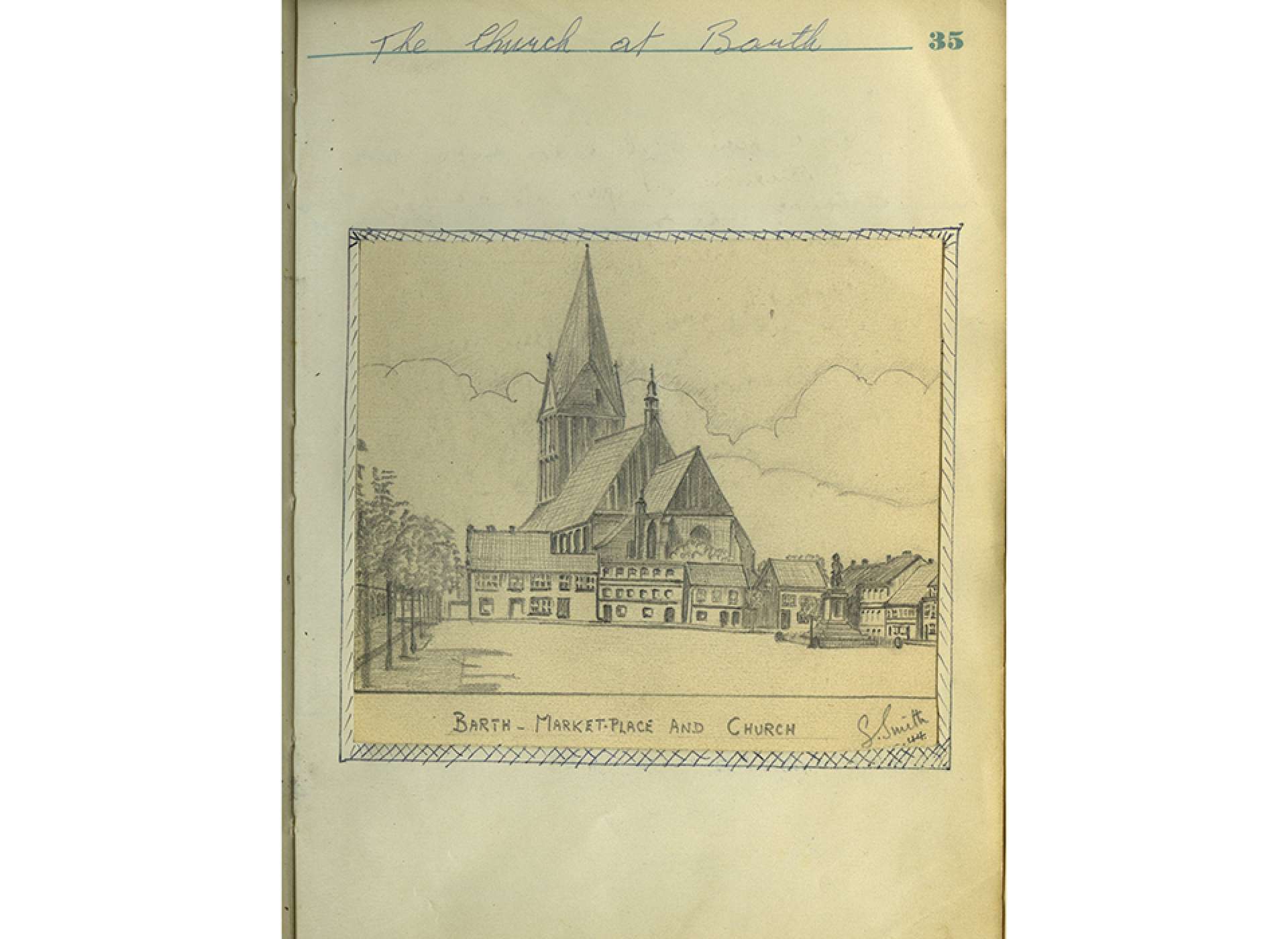
Sketch from Olaf Lambert’s diary, Gift of Olaf Lambert, 2001.361
The camp had been open since 1942 and began to receive American fliers in 1943. It was a long few years for many of the residents of Stalag Luft I, who called themselves “Kriegies,” short for Kriegsgefangener, German for “prisoner of war.” The camp’s liberation was singular among POW camps in Europe with a somewhat peaceful, static transfer of power.
Col. Hubert “Hub” Zemke stands at the heart of the liberation of Stalag Luft I and why it was so different from the liberation of other POW camps. Zemke commanded the 56th Fighter Group, “Zemke’s Wolfpack.” After 154 missions and 17.75 confirmed aerial victories, he went down in his P-51 on October 30, 1944. Upon arrival at Stalag Luft I in December, he was the Senior Allied officer (SAO) in the camp, which due to the situation in the war, had rapidly deteriorating living conditions. The son of German immigrant parents, Zemke was fluent in German, a skill which would aid in his later negotiations with German camp officials.
Just around the time that Zemke arrived in the camp, conditions began to deteriorate for the men in Stalag Luft I. One POW, bombardier Oscar Richard, resident of Stalag Luft I since January 1944 reported in his book Kriegie: An American POW in Germany, “German power lines were ripped away in several vital places, and our electric lights were out for over a month. The water went on and off periodically, and we were caught short several times because we had no containers in which to store water.” In February, the Germans also cut off the Red Cross parcels which had helped to sustain POW life by supplementing the meager German rations. Richard refers to this period as “the famine.” POWs became too weak to do anything but lie in their bunks and dream about food.
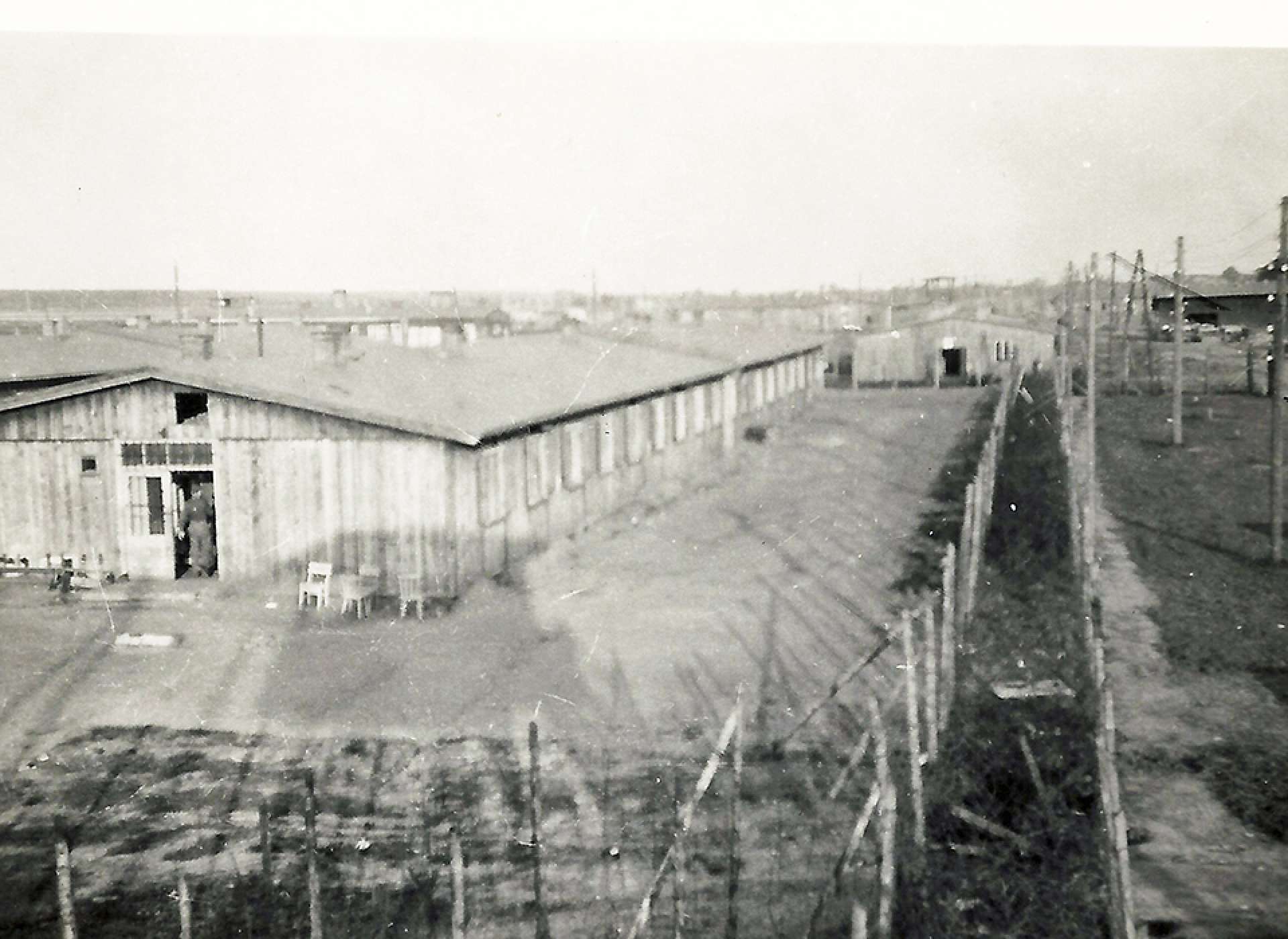
Barracks in Stalag Luft I: Gift in Memory of William Richard “Dick” Terrell, 2019.079
Most other POW camps throughout the eastern parts of German territory, like Stalag Luft III in Sagan and Stalag Luft IV in Tychowo, both in present-day Poland, began to be evacuated in late January and February. Prisoners were marched hundreds of miles in sub-zero temperatures, without shelter and with minimal food only to prevent them being overtaken by the Red Army. Some of these POW refugees arrived at Stalag Luft I, where the camp began to suffer from overcrowding. The Stalag Luft I Kriegies began to prepare for a similar fate. They were told to make sleds and sew rucksacks out of garments in order to carry their belongings on the journey to a new camp deeper in the German Reich.
Then, life changed again for the Kriegies, in mid-April as the Red Cross lifeline was reopened and security restrictions relaxed. Morale soared and suspicions were that the Germans knew they were beat and wanted to make nice. The shift in attitude was evident, and around this time some of the German guards even began to salute Zemke. Plans were made by Zemke for a peaceful power transfer in the camp. He even had signs posted in the camp, in plain sight for camp Kommandant Oberst von Warnstedt, who assumed control in January 1945, detailing how the enemy would be treated fairly once the surrender happened. There was constant artillery booming in the distance.
Germany’s largest underground newspaper, the POW WOW, which stood for “Prisoners of War Waiting on Winning,” printed in Stalag Luft I from May 1944 to May 1945, reported in the April 14th issue that Patton’s Army was advancing in the West and that the Russians were approaching Germany from the East, just having taken Vienna. The paper, which grew into a daily 2-sheeter, with an 8-page Sunday supplement, consisted mainly of news transcribed from BBC reports from a secret radio. The reports were typed, copies made via carbon and distributed, one per barrack, where they were devoured by news-hungry Kriegies. In late April, they followed the progress of the war avidly and wondered about their fate as captives and which front would reach them first.
In the last days of April, von Warnstedt met with Zemke and tried to order the entire camp to take to the road, just steps ahead of the Russians advancing rapidly from the East. Zemke refused and held ground. They agreed that von Warnstedt and the guards would leave under the cover of darkness and head towards the American lines to surrender. Former POW pilot Richard “Dick” Terrell wrote in a diary he kept at the time, “Jerry pulled out tonight. Americans manned the towers at 01:10.” On May 1, 1945, the Kriegies at Stalag Luft I awoke to no captors.
Zemke assumed control of the camp, setting up an MP force, his “Field Force,” in the camp to help establish some order. Scouts were sent from the camp to intercept the Russian forces, which they did five miles from the gates. Still they wondered, what would be their fate. The Russians appeared at the camp the next day. A special, single edition of a new newspaper, The Barth Hard Times reported “Russky Come!” Terrell reported in his diary, “Have had 4 RedX parcels issued, eating like rascals.”
The next day, May 2nd, more Russians arrived and Zemke lost control of the situation. Terrell reported, “Russians seem to be running things. Krieges [sic] going wild - lots of them taking off - lots of discontent…” For men who had been held behind barbed wire in some cases for years, there was no holding them back. Pilot James Baynham recalled, “Of course we went out. We couldn’t wait to get a taste of freedom.” Despite Zemke’s orders to stay put, the Russians commanded that the barbed wire be torn down. The city of Barth became complete chaos. Russian troops paraded through the streets with the ex-Kriegies, drinking, collecting souvenirs, and cowing the few locals left in Barth. The next day, the Russian commander declared martial law in the town. Several Americans were reported killed in the chaos and confusion that reigned.
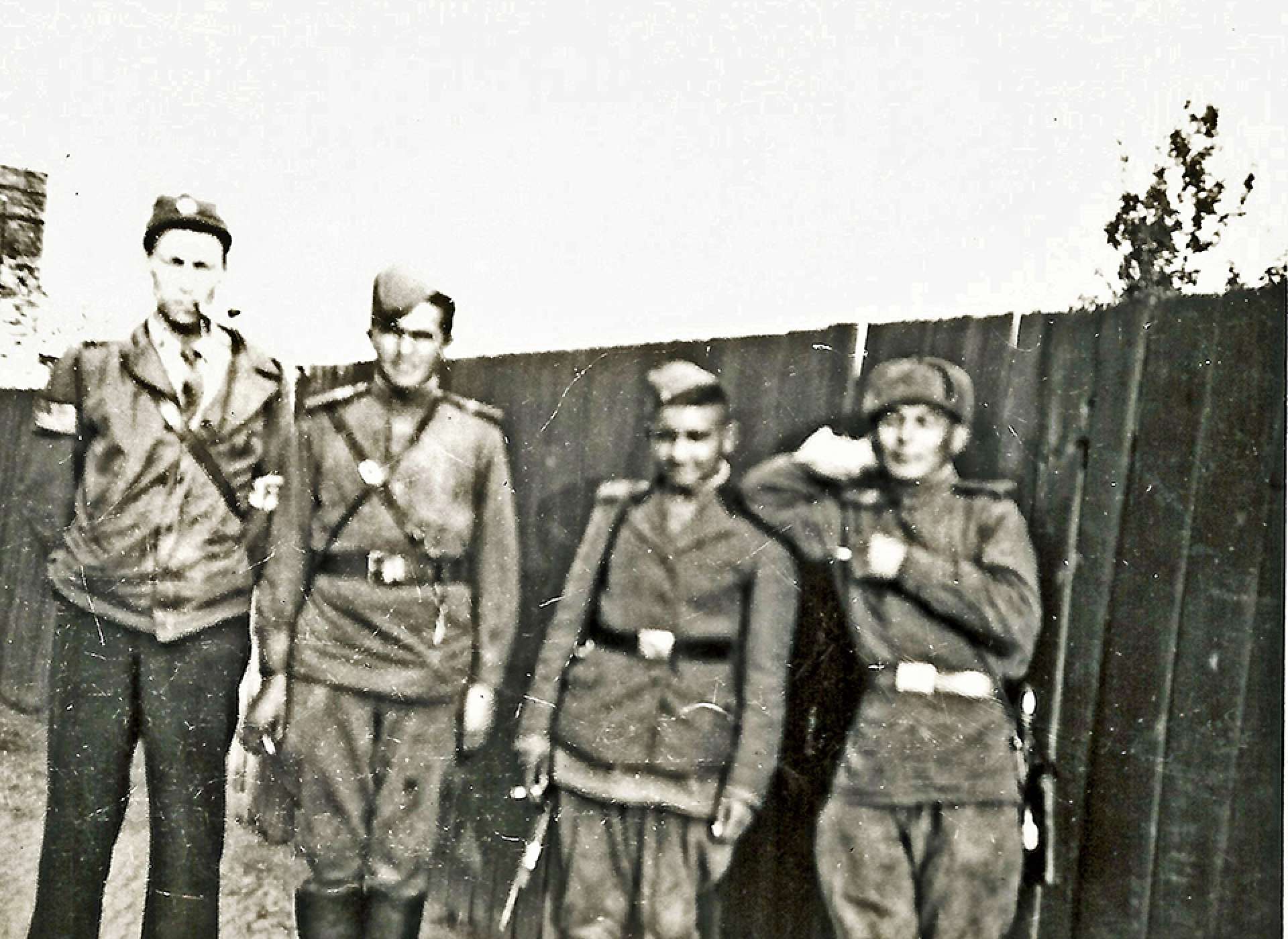
Former POW Dick Terrell with Russian soldiers in Stalag Luft I: Gift in Memory of William Richard “Dick” Terrell, 2019.079
Zemke ordered the liberated Americans POWs to stay put, fearing further losses in the chaotic last days of the war. With the exception of around 700 POWs who could no longer be held back and took to foot to make their way independently back to Allied lines, most of the POWs were still in Stalag Luft I to celebrate VE-Day on May 8th.
Senior British Officer of the camp, Group Captain Weir reported for The Barth Hard Times, “With the redemption of a continent, our exile is ended. Our barb-bound community will soon be a memory.”
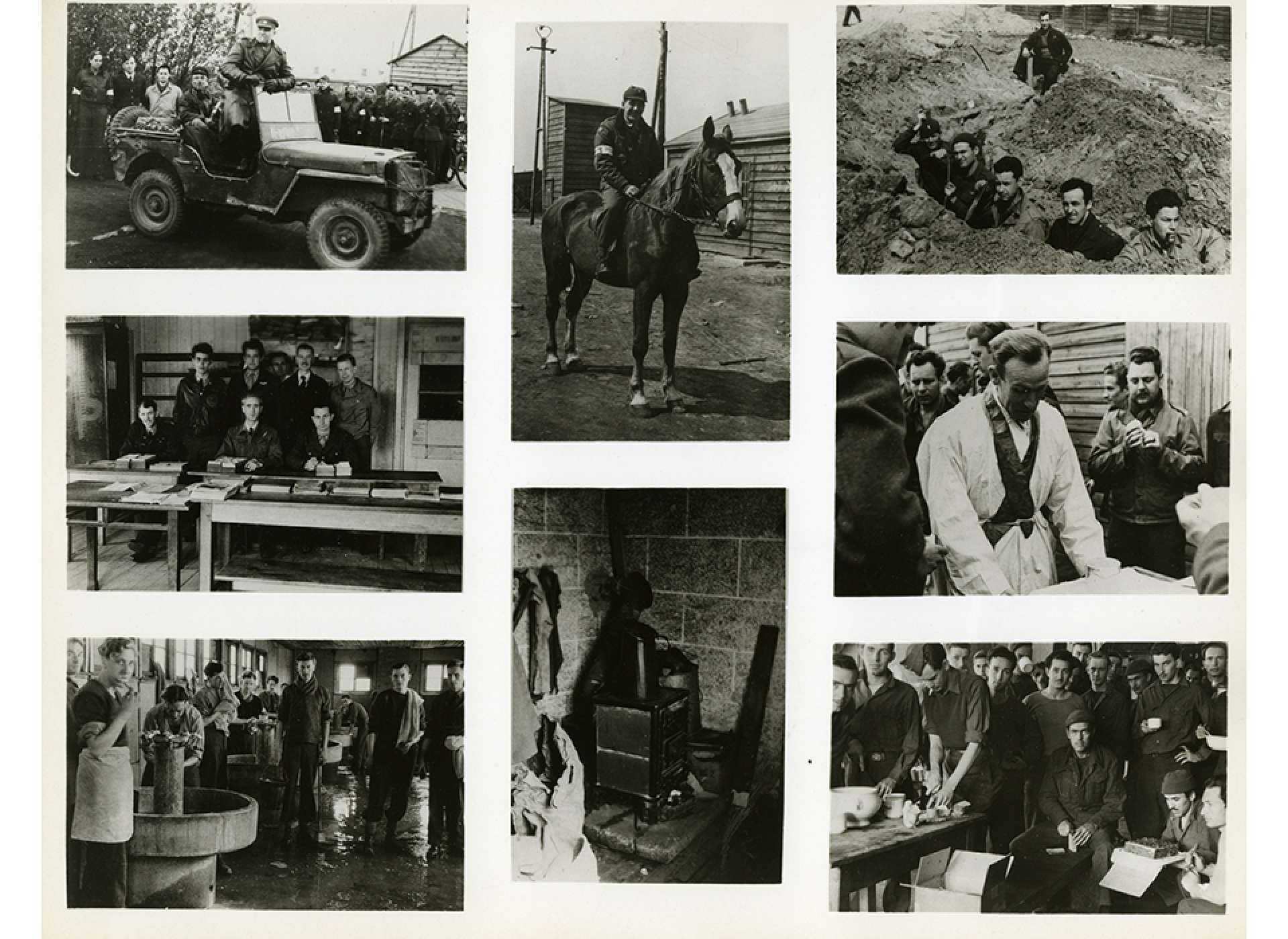
Scenes from Stalag Luft I including top left, “Honor guard of British and American MPs for the departure of Russian General Marozil in a lend-lease jeep.” and top middle, a member of Zemke’s Field Force wearing improvised armband. The National WWII Museum, 2017.145
The Museum’s collection contains numerous Stalag Luft I-related holdings, among those, several journals including ones from Frederick Kemp, Dick Terrell, Irwin Stovroff, Nicholas Samra, Robert Faulkner, Joseph Pausha, Joseph Cosgrove, William Mehegan, Robert Bueker, and Henry Lambert. Thank you to their families for the donations of these valuable resources.
One of the diaries, that of British flier Olaf Lambert, can be viewed online at Guests of the Third Reich.
A selection of the Museum’s oral histories from Stalag I Luft I can be viewed on our Digital Collections Page.
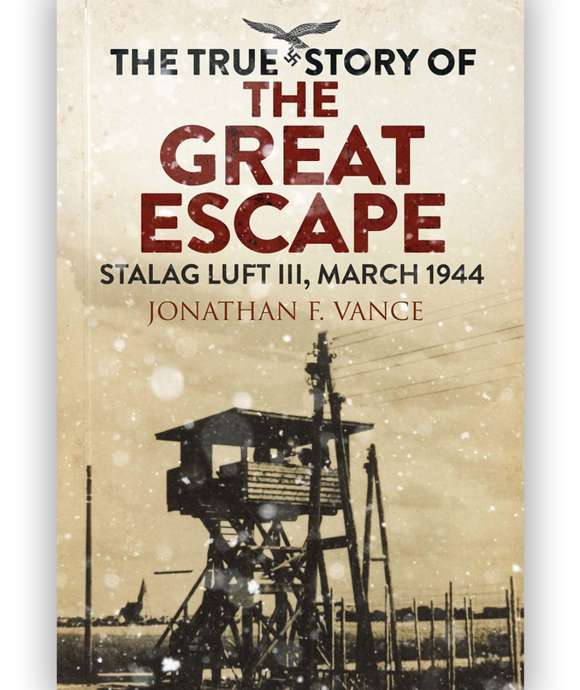
The True Story of The Great Escape
Support the continuing educational mission of The National WWII Museum by shopping our Museum Store book selection.
This article is part of an ongoing series commemorating the 75th anniversary of the end of World War II made possible by Bank of America.
Kim Guise
Kimberly Guise holds a BA in German and Judaic Studies from the University of Massachusetts Amherst. She also studied at the Universität Freiburg in Germany and holds a masters in Library and Information Science (MLIS) from Louisiana State University. Kim is fluent in German, reads Yiddish, and specializes in the American prisoner-of-war experience in World War II.
Cite this article:
MLA Citation:
APA Citation:
Chicago Style Citation:
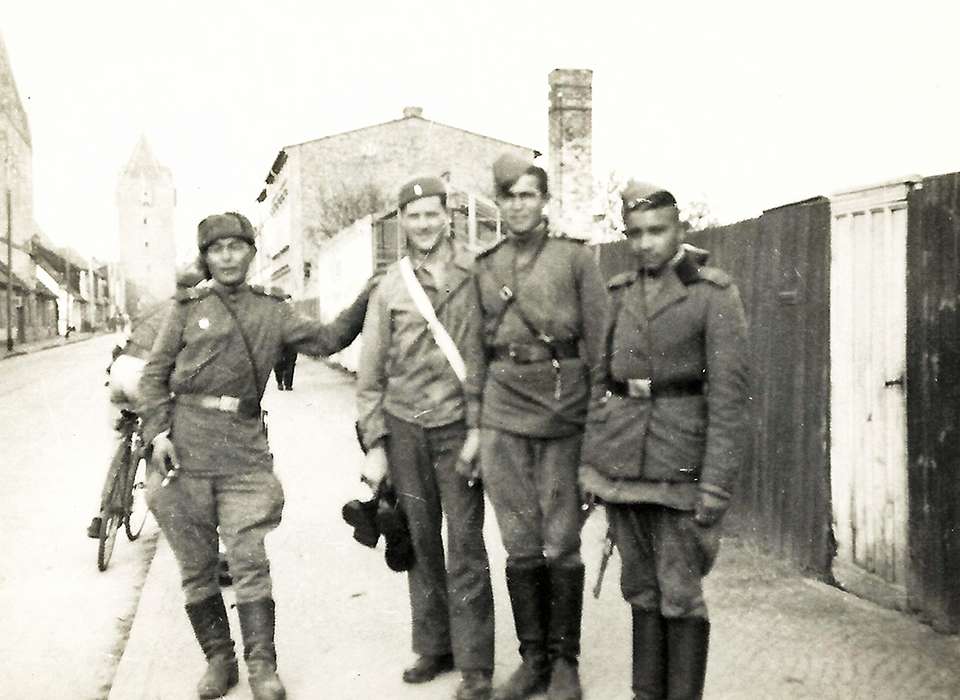


![Max Fuchs, New York City cantor, sings as Rabbi Sydney [sic] Lefkowitz, Richmond, VA, conducts the first Jewish services from Germany.](/sites/default/files/styles/max_650x650/public/2025-10/image1.jpg)




